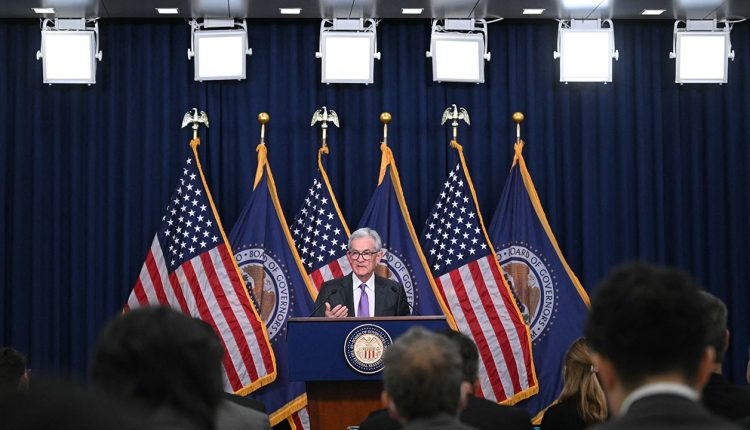Inflation edged slightly higher in November, but that hasn’t dimmed the market’s expectations that the Federal Reserve will cut interest rates when policymakers meet next week.
The consumer price index (CPI) ticked up last month, rising to 2.7% on an annual basis from 2.6% in October. The rise was in line with the estimates of economists polled by LSEG, but it moves the headline inflation figure further from the Fed’s target rate of 2% – though it remains well below the 9.1% peak of this inflationary cycle in June 2022, which was the highest in four decades.
Despite the rise in inflation, the probability of a 25 basis point rate cut at next week’s meeting increased from 88.9% on Tuesday to 94.7% as of Wednesday afternoon, according to the CME FedWatch tool.
“The increase in the inflation rate (2.7% vs 2.6%) won’t be enough to spoil Christmas – the Fed is going to cut rates another 25bps next week and that should enable markets to rally into year end,” said Chris Zaccarelli, chief investment officer for Northlight Asset Management.
INFLATION RISES 2.7% IN NOVEMBER, IN LINE WITH EXPECTATIONS
“The headline CPI was consistently above 3% in the beginning of the year and now it is consistently below 3%, so despite the fact that the series is a little noisy from month-to-month, we believe the Fed is likely to look through these fluctuations and continue on their easing path,” Zaccarelli added.
The Fed kicked off the current rate-cutting cycle with a larger-than-normal 50 basis point cut in September, when the benchmark federal funds rate was at a range of 5.25% to 5.5%, the highest level since 2001.
The central bank followed that up with another 25 basis point cut in November amid signs that inflation was still trending in line with expectations and the labor market remained relatively stable despite cooling off.
TRUMP SAYS HE WON’T FIRE FED CHAIR JEROME POWELL
EY chief economist Gregory Daco and EY senior economist Lydia Boussour said they expect the latest inflation data to allow the Fed to continue to cut rates, though they think it should be a closer call for policymakers than markets are currently indicating.
“We believe economic fundamentals of gently decelerating labor market momentum, strong productivity growth and disinflationary under-currents would support a further 25bps fed funds rate cut at the upcoming FOMC meeting,” Daco and Boussour wrote.
“Still, the current markets pricing of over 99% odds of a 25bps rate cut seems misaligned with Powell’s agnostic optionality approach… Given recent Fed communication and policymakers’ extreme data dependence, the odds of a rate cut should be much closer to a coin toss,” they added.
US ECONOMY ADDED 227K JOBS IN NOVEMBER, ABOVE EXPECTATIONS
Federal Reserve Chair Jerome Powell said at a press conference following the Fed’s November rate cut that the central bank is taking a gradual approach to lowering interest rates and can adjust the pace of its cuts as needed, depending on economic conditions.
“As the economy evolves, monetary policy will adjust in order to best promote our maximum employment and price stability goals. If the economy remains strong and inflation is not sustainably moving toward 2%, we can dial back policy restraint more slowly. If the labor market were to weaken unexpectedly, or inflation were to fall more quickly than anticipated, we can move more quickly,” Powell explained.
Powell spoke at an event hosted by the Dallas Regional Chamber in mid-November and offered more details about the Fed’s approach to rate cut decisions.
“The economy is not sending any signals that we need to be in a hurry to lower rates. The strength we are currently seeing in the economy gives us the ability to approach our decisions carefully,” Powell explained. “Ultimately, the path of the policy rate will depend on how the incoming data and the economic outlook evolve.”
“We’re navigating between… the risk that we move too quickly, the risk that we move too slowly. We want to go down the middle and get it just right so we’re providing support for the labor market and also helping to enable inflation to come down,” Powell said. “So going a little slower, if the data will let us go a little slower, that seems like a smart thing to do.”
The Federal Open Market Committee (FOMC), the Fed’s monetary policy-setting panel, is set to announce its decision about rate cuts on Wednesday, Dec. 18, after a two-day meeting.
Read the full article here

